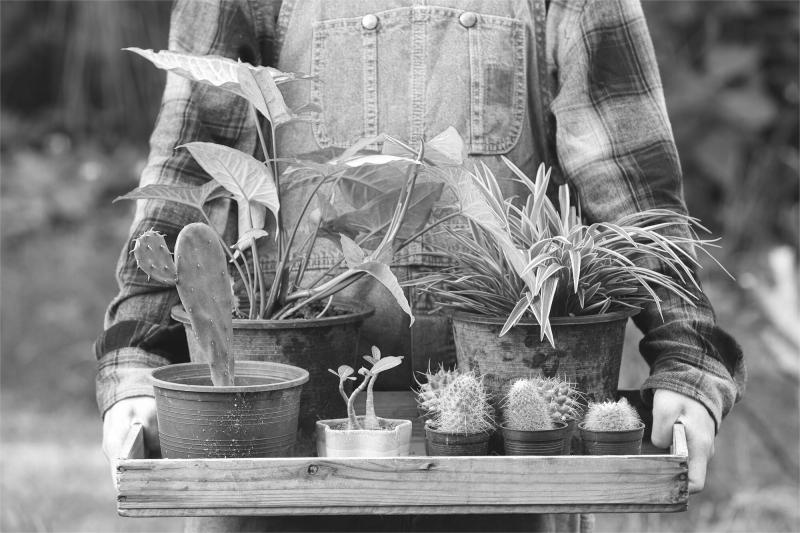Are you too busy for gardening? Many people want to try this interesting and fulfilling hobby. It can actually reduce stress and create a more peaceful environment. Too bad, though, modern life often leaves little time for these kinds of hobbies.
But for those willing to try, don’t worry. You don’t have to take it super seriously to grow your own productive garden. You can be a very successful weekend gardener.
Time-efficient gardening practices can help you maintain a vibrant garden without spending extra hours. Techniques like mulching, vertical planting, and drip irrigation minimize effort while maximizing results. These methods support healthy plant growth and reduce maintenance tasks.
This article provides gardening hacks, tips, and preparations to help you grow more in less time. Keep reading to discover how weekend gardening can become a fulfilling part of your life!
Weekend gardening for personal productivity and enjoyment
Gardening isn’t just about growing plants; it’s also a powerful tool for personal productivity and enjoyment. This healthy activity provides a balance of productivity and relaxation. Physical activity keeps you moving, while the surrounding greenery naturally reduces stress. Moreover, watching your plants grow and thrive is incredibly rewarding.
The benefit of connecting with nature also enhances both physical and psychological well-being, making it a perfect weekend activity for busy individuals. Studies have shown that gardening increases mental resilience through maintaining emotional regulation, relationships, confidence, positive thinking, and spirituality.
Gardening tips and tricks for weekend warriors
For those with hectic schedules, weekend gardening offers a practical approach to maintaining a vibrant garden with limited time. A significant challenge in gardening is managing tasks like planting and pruning quickly, especially when unpredictable weather, plant diseases, and soil maintenance can further complicate things.
However, implementing efficient strategies makes gardening more manageable, especially with the gardening tips and tricks in the following sections.
Read more: Nature Hobbies and Their Benefits
Prioritize high-impact tasks
Planning is key to maintaining a thriving garden. Try creating a basic weekend gardening schedule to ensure you get everything done efficiently.
While gardening, you will also need to make time for essential key tasks. By prioritizing a few key tasks, you can maintain a healthy garden with minimal time commitment.
- Watering. Watering is crucial for keeping plants healthy, especially for new plants in dry weather. However, if you’re short on time, consider implementing an automated watering system or selecting drought-tolerant varieties that require less frequent watering once established.
- Weeding. Regular weeding helps prevent unwanted plants from taking over, especially if your plants take roots and mature.
- Pruning. Some plants require occasional trimming to stay healthy and tidy. Focus on pruning when plants are dormant, like late winter or early spring, to keep them at peak height without overworking.
Choose low-maintenance plants
The key to growing more in less time is choosing low-maintenance plants. By selecting certain types of plants, you can reduce the time spent planting while still enjoying beautiful, easy-to-grow greenery.
Low-maintenance plants have several criteria: they do not require too much attention, can survive various seasons, and are resistant to pests. These kinds of plants can be followed by adjusting the location where you plan to garden. Here’s a closer look at them.
Drought-tolerant plants
Drought-tolerant plants are great for people with busy schedules because they can survive even if you forget to water them now and then. Plants like lavender, aster, and succulents are perfect examples of this low-maintenance option.
Once established, these plants need very little water — only a few times a week. This makes them perfect for anyone who wants an easy-to-care-for garden. Their ability to survive dry weather means less work for you.
Perennials
Most plants need more care when young, but perennials require much less once mature and rooted.
Perennial plants live for a very long time, do not shed quickly, and can grow each year for at least three years. Some of the top perennial plants include sedum, hostas, and asparagus. These plants only need to be planted once to thrive for several years.
Easy-to-grow vegetables
Besides considering the plant’s hardiness, choosing easy-to-grow types, like most vegetables or perennial vegetables, is also a great option, especially if you have a larger space. These plants are good from both a management and beneficial perspective, as they require minimal extra care but still provide food. Perennial vegetables even have more variable vitamin levels.
You can choose easy-to-grow perennial vegetables like potatoes, asparagus, mint, and radishes. Or you can choose other easy-to-grow vegetables, including lettuce, tomatoes, kale, chilies, and herbs.
Use time-saving tools and techniques
Maximizing efficient gardening is not just about plant selection; using the right tools and methods can make it easy. Investing in smart tools and simple techniques will help you achieve more with less effort.
Drip irrigation
A drip irrigation system efficiently waters plants by delivering water directly to their roots. This reduces water waste and ensures plants get the moisture they need without a runoff.
Drip irrigation is especially useful during dry periods, as it minimizes the amount of water lost to the air. By focusing the water on the roots, it helps your plants grow stronger and healthier with less effort. In this research result, plant size and weight were maximized with drip irrigation combined with mulches.
Mulching
Mulching is when you cover the soil around your plants with materials like wood chips, bark, or gravel. Mulches significantly positively affect plant height, and this effect is more pronounced in lower water regime treatments than in higher water regime treatments.
To mulch properly, spread a 2 to 3-inch layer around your plants. Organic mulches can even improve the soil as they break down. Mulching makes gardening much easier by reducing the time you spend weeding and watering.
Ergonomics tools
Use the best ergonomic gardening tools, such as a trowel, pruner, weeder, and gloves designed to minimize strain on the hands and wrists. No less important is ensuring that all tools are clean and well-maintained.
It makes these gardening jobs quicker and easier, creating healthier plants.
Embrace vertical and container gardening
If you’re short on space but still want a charming garden, vertical and container gardening can offer creative solutions. These methods allow you to maximize your growing potential without requiring a large plot of land.
Vertical planting
A vertical garden is a great landscaping tip for beginners. It is a unique way of growing plants vertically instead of on the ground.
To make a vertical garden, you only need a support structure like a wooden frame or recycled materials such as bottles or pots. Add some soil or coconut fiber, and then plant easy-to-grow plants. You can water them by hand or set up a simple drip system.
Vertical gardens are ideal for small areas because they occupy little floor space. You can grow many plants, such as basil, thyme, strawberries, peace lilies, and star jasmine. These plants are perfect for tight spaces and make your area look beautiful. They are also perfect for city dwellers. You can customize your vertical garden design.
Planting in a container
Container planting is an excellent vegetable-growing hack. This means growing plants in various containers rather than directly in the ground. It’s an excellent option for low-maintenance gardening because it allows better control over soil quality and requires less frequent watering.
The technical aspects of container planting are relatively simple, requiring only a few essential tools such as pots, soil, and a watering can. Containers should have holes at the bottom for drainage.
Container planting offers multiple benefits, including improved air quality, better space utilization, and enhanced aesthetics. This research shows that container planting can reduce volatile organic compounds (VOCs) and other pollutants. This demonstrates that container gardening positively impacts the quality of life beyond its aesthetic and practical benefits.
Batch and simplify tasks
You can simplify tasks by batching your gardening task types in a structured and scheduled manner. Batching means grouping similar tasks between different activities, which is more efficient in time and energy.
This can be done by grouping and completing similar tasks on the same day. For example, on the first weekend, you can plan and prepare your gardening tools and then focus on planting and fertilizing your plants on the second weekend.
Avoid disorganized tasks, such as buying tools casually and planting immediately. This can lead to task-switching fatigue and is also very time-inefficient. Instead, stop halfway when you realize you need more tools and continue planting next weekend.
In conclusion
If you have a busy daily routine but still dream of having a thriving garden, your weekends can be the perfect time to garden productively! Gardening offers physical health benefits and a sense of relaxation that helps neutralize the stress of your hectic schedule.
The good news is that maintaining a beautiful garden doesn’t have to take up your entire time. With smart strategies, you can easily make gardening a perfect weekend activity.
With the activities discussed in this article, you can easily become an excellent weekend gardener.
So, roll up your sleeves and watch your garden flourish!
If you would like to see more resources on efficient gardening, check out the Personal Productivity Science Labs. The lab uses the research of the Institute for Life Management Science to produce courses, certifications, podcasts, videos, and other tools. Visit the Personal Productivity Science Labs today.
Photo by jcomp on Freepik


